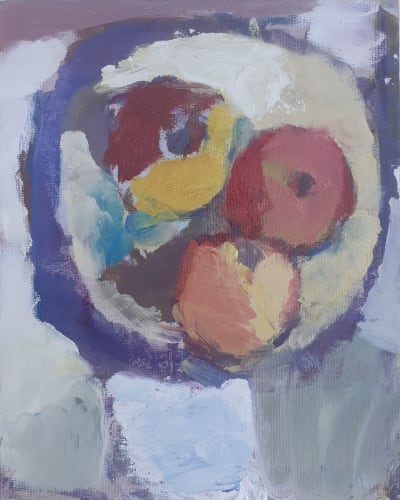Michael Weller is one of the NEAC’s newest members, elected in summer 2022. In this article, he invites us to pull up a chair as he tells us the story of what led up to this achievement . . .
“It’s the 1970s, an evening at my grandma’s flat in Winchester. My grandmother, Frances Sarah Lynn. It’s during the festival of Passover, which celebrates the Jews’ departure from ancient Egypt. The angel of death passes over the homes of the enslaved Jewish people and visits the firstborn of the rest of the population instead. As the firstborn out of my brother and me, I love this story.
On the Seder plate the six foods, shankbone, roasted egg, horseradish, onion, bitter herbs, parsley.
After the meal (chopped liver, chicken soup, chicken, a lot of food), my grandfather is still quietly praying, the rest of us talking. My grandmother, cigarette in hand, ashtray on the little round table next to her, saying artists are two a penny, wanting me not to ruin my life. Everyone agreeing and me knowing they are probably right.
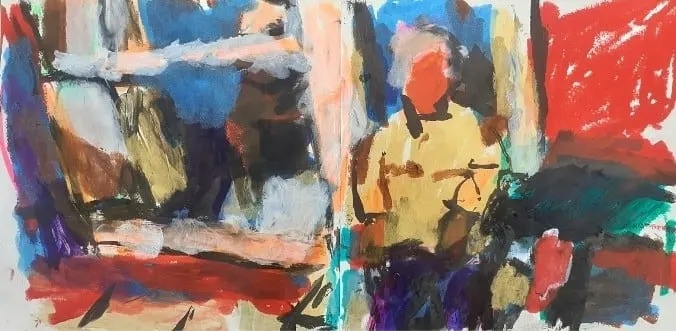
The women in our family, my grandma’s cousins, bring us kids a hot orange drink in a glass. Home-made biscuits. Hospitality is important in Judaism because we were once strangers in a strange land. Jews remember what it is to be a stranger.
I do a drawing of my grandfather Harry Lynn with a yarmulke and a prayer shawl, and know it is good. I leave the drawing on top of a cupboard for years till it disintegrates.
I go away, study librarianship and scrape a pass. I draw friends and it takes my mind off librarianship. I look back and think poor thing.
Years later, I’m working in an office in London, still thinking about being an artist. I say to a friend, I don’t know whether to write or do art. Such problems! She says do art. Helen, if you’re reading this, I owe you.
I do a fine art degree at London Met. It’s quite a conceptual place but I love being an art student. The teachers are a thoughtful lot and interesting. David, who teaches printmaking, says the others wouldn’t say this but follow your gut. David Skingle, miner’s son. His dad drew.
The other printmaking students are returning from seminars, where they have to discuss the themes and concepts that drive their work, rolling their eyes, wanting to get back to printmaking.
I like Rothko for a long while. I understand the reservations some people feel, but his work still moves me.
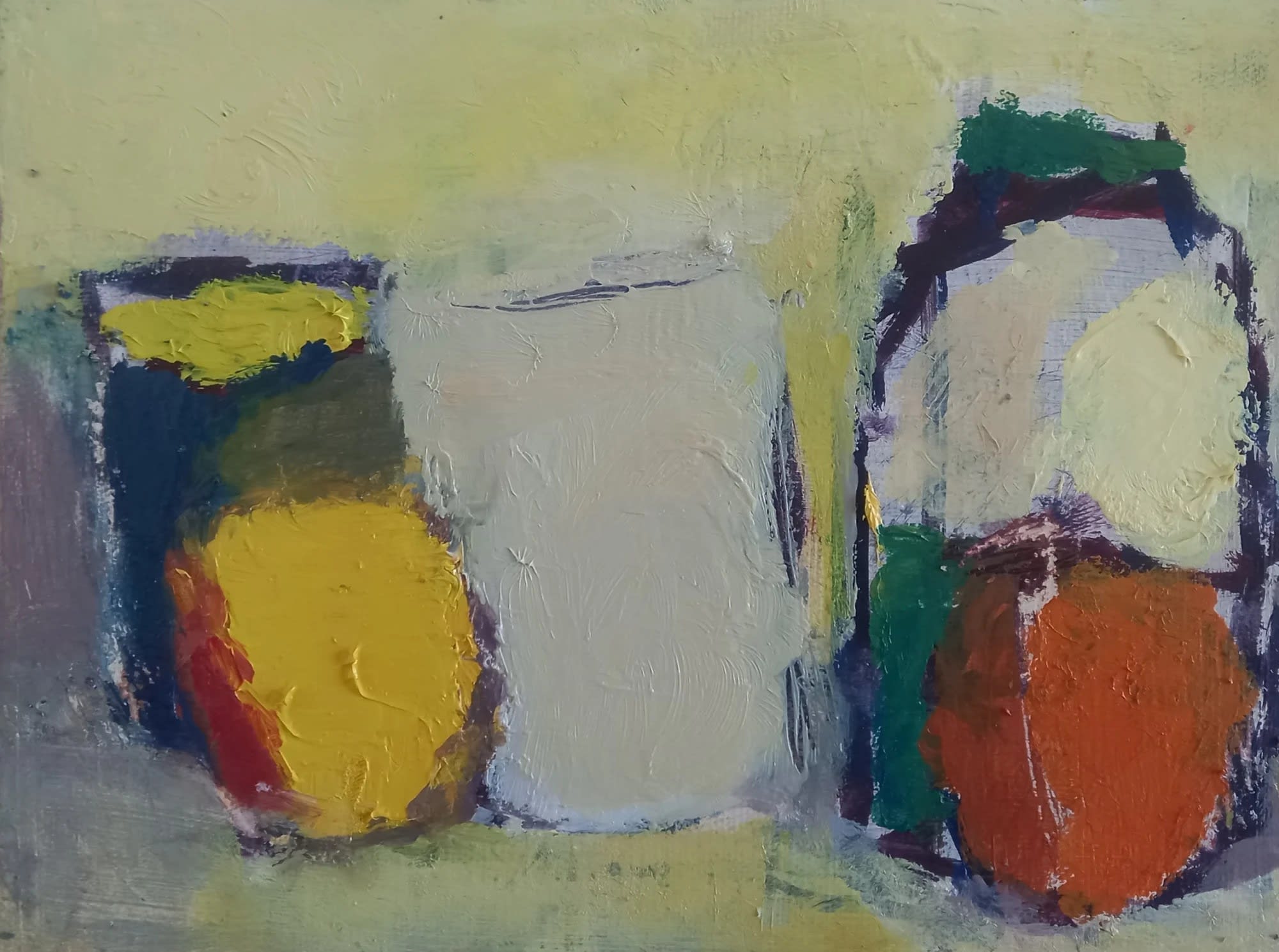
I am an abstract artist, then another teacher says you can have abstract relationships in a figurative painting.
After my degree, I study portrait painting at Lavender Hill studios. I say it’s like boot camp, then look at the teacher’s slightly surprised face and think no, it isn’t.
I paint a portrait of the model, and another painter says my work is so emotional and sounds emotional as she says it so I am pleased. The model isn’t but another woman says to me quietly “You’ve really got her.”
I am a drawing Scholar with the New English Art Club. So, I get to go to artists’ studios. They give me Coca-Cola, coffee, biscuits, a nice sandwich.
Having other artists who know painting, whose work you like, like your work. It’s about as good as it gets in this life.
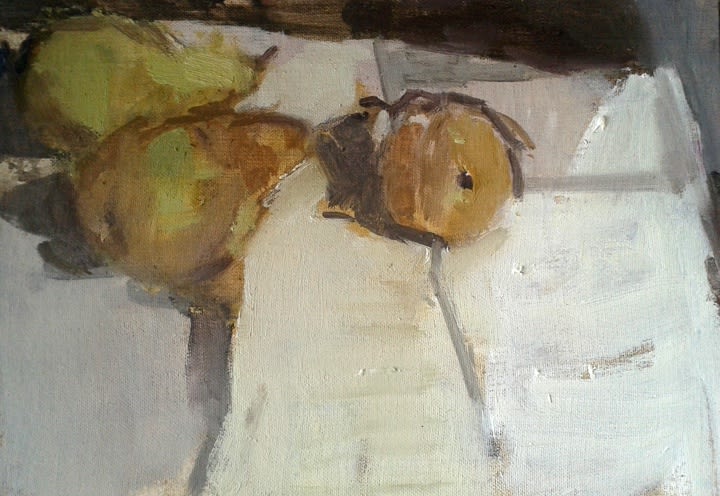
I paint a lot of pears. I get an award for a painting of pears. As I accept my award the man says, “It would be nice to see you paint something other than pears, Michael.”
“He wouldn’t have said that to Morandi”, I tell sympathetic friends.
Patrick Heron said you don’t look at a painting and go, “It’s an apple, it’s an apple, it’s an apple!”
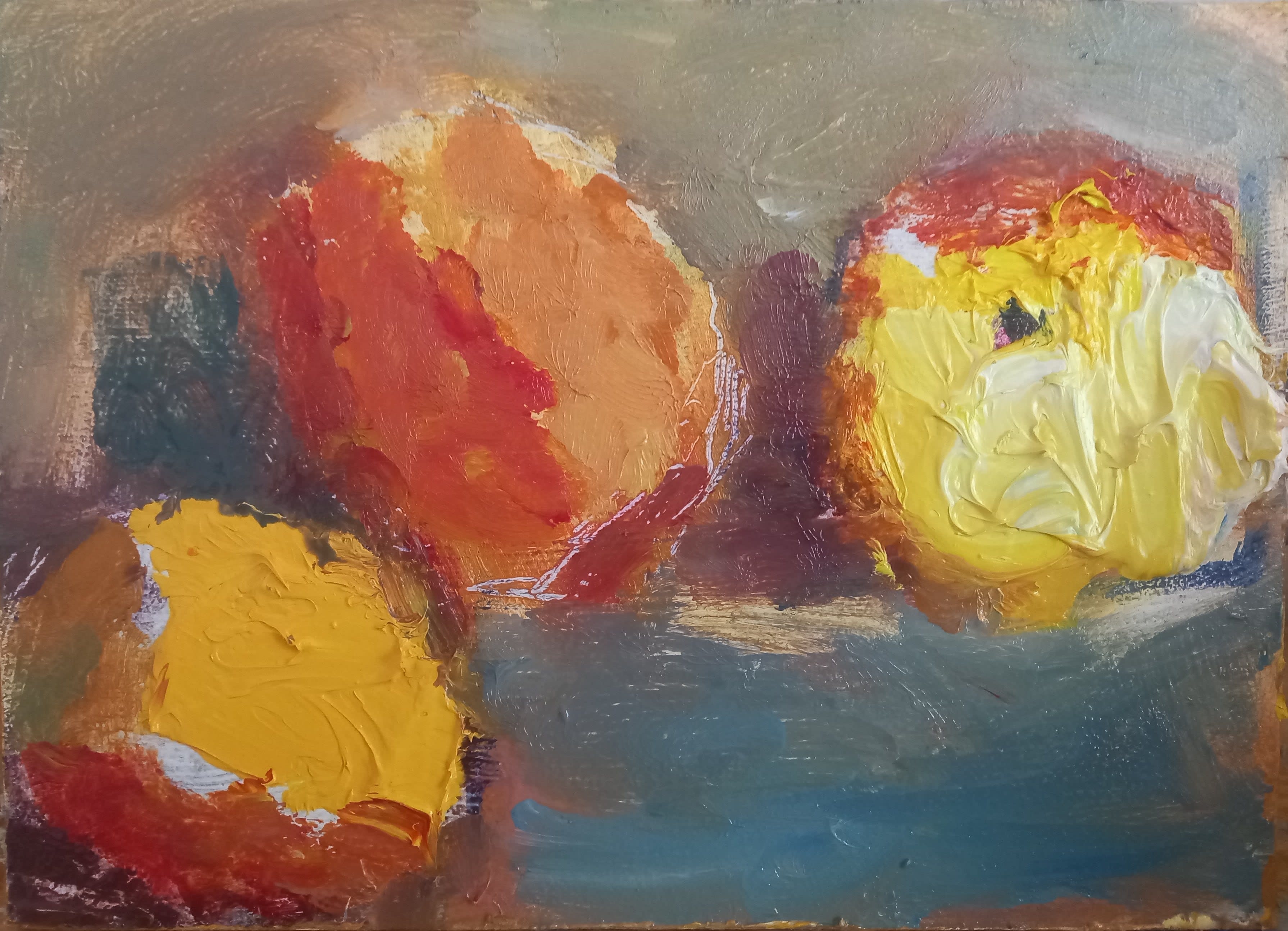
Another painter suggests painting slightly larger pictures sometimes. Not very large. Just a bit bigger.
It’s not everyone’s cup of tea, which is partly why I paint at home. “Oh, you’ve just started”, say the friendly passers-by, as I stand in the landscape with my easel and a ton of painting materials. “I’ll come back later when you’ve done a bit more!” Someone else comes along, "You’ve just started."
A student asks about edges. I say I like to leave in the lines, not disguise them. “Let it be felt that the painter was here”, Bonnard said. But then I do another painting and think a little about edges.
What is that colour? I’m looking at the rainy sky from a bus shelter in St Ives. It rains a lot that week. What is the colour of that wall behind the objects? Is it yellow?
There are three pears on my grandmother’s little circular table, and it’s covered in paint. You can turn the table round, it’s useful.
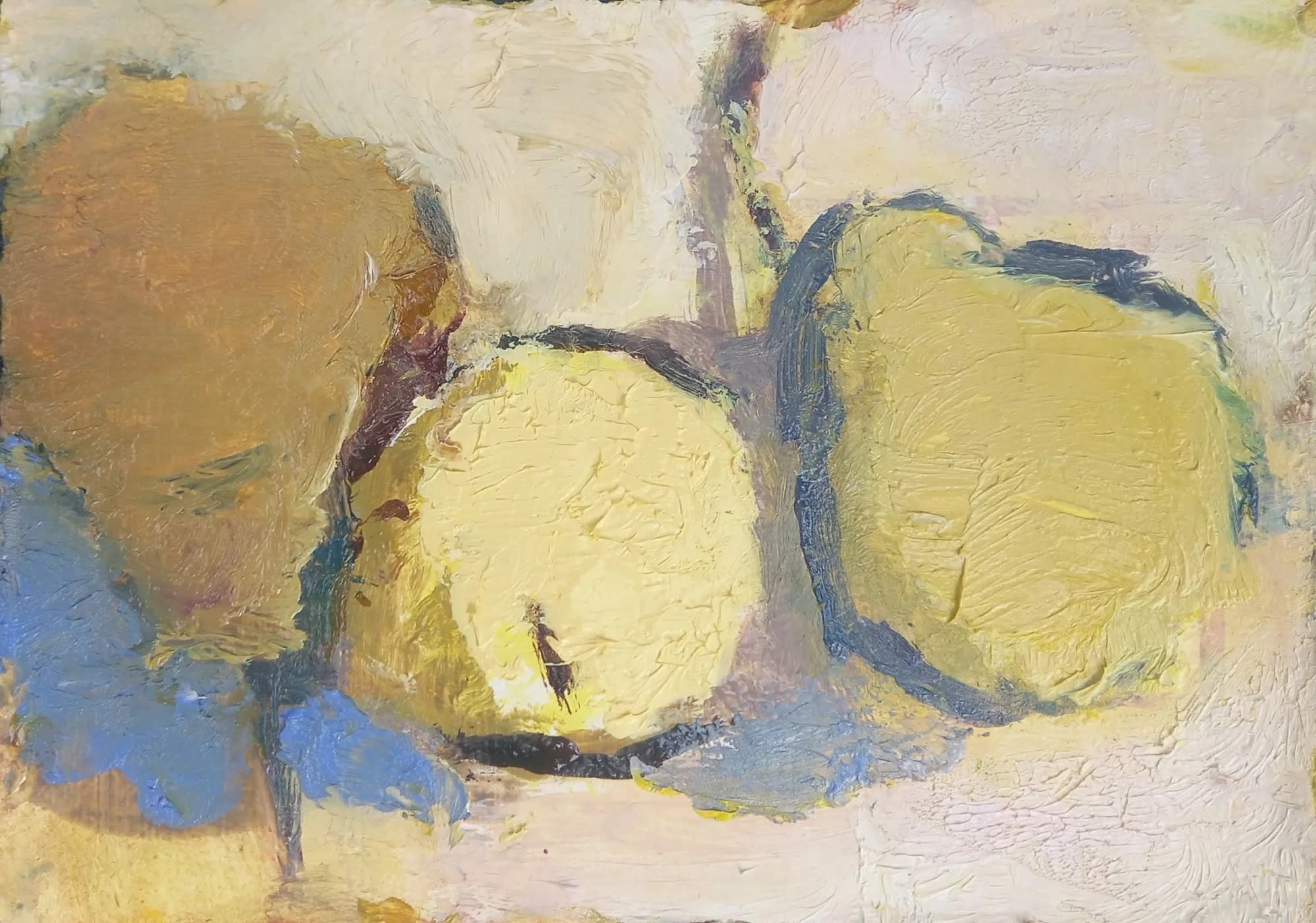
I like teaching. At first when I’m asked, I say “Yes, please”, thinking, “I suppose I’d better do this.” I don’t praise the students, they praise me. That’s a joke. A lot of students had a not-very-encouraging art teacher who put them off art for life.
People don’t like to do a bad drawing, but that stops you from doing any drawing. I start to paint and then I get into it.
The students ask interesting questions. I’m emboldened to try harder. Use a palette knife, and me
liking my thin washes of colour. The students cheer me up quite a lot.
I say use sketchbooks, draw from life like they do in the NEAC. Your drawing develops naturally over time.
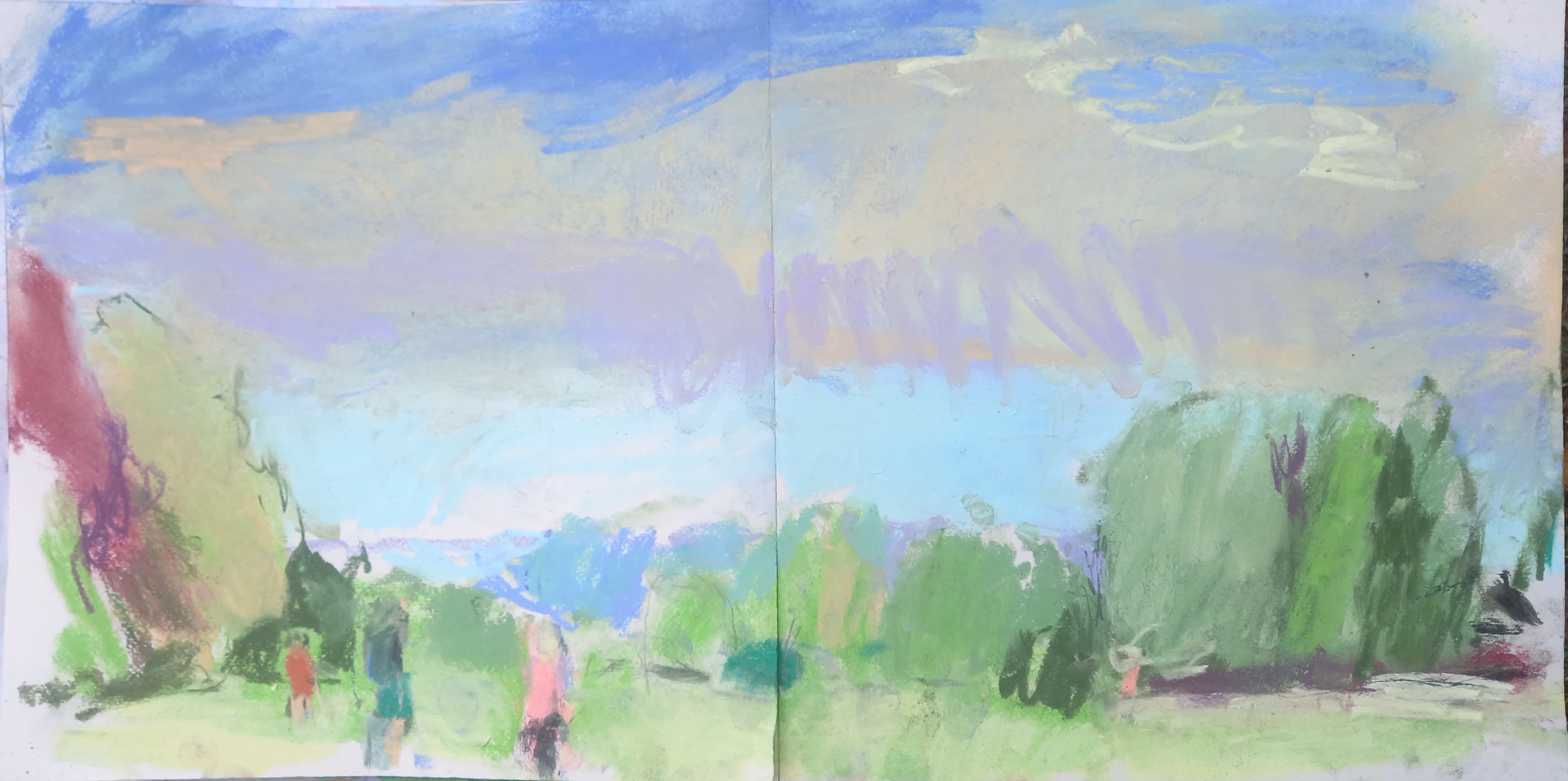
I take a small sketchbook with me wherever I go. I have big sketchbooks, but the rucksack gets heavy. Bic pen, kids’ paint sticks, pastels. Homes, trees, people walking. The shop-bought colours are loud but that’s OK. It forces me to find a solution. And people don’t come up so much. I get the odd smile.
I was elected to NEAC membership a few weeks ago. All I could think was I wish my grandmother was here. My grandfather, my mother, my father. I look outside and the birds peer back, in the grass, on the clothesline and taking flight.”

Michael's work features in two exhibitions this month (September 2022) in Dorset and Sussex, and find out about forthcoming painting courses that he will be teaching.
Learn more about Michael and view a selection of his work (some are available to purchase online) on his NEAC artist profile page.
